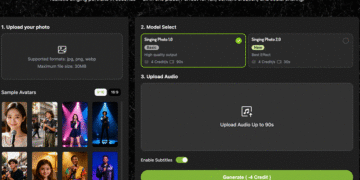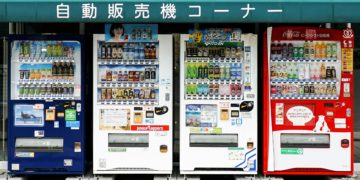The Evolution of Market Analysis
For many years, the world of trading was dominated by a handful of charts and indicators. The candlestick, the moving average, the RSI—these were the pillars upon which most trading decisions were built. They painted a picture of price action, showing us where the market had been, but they were largely reactive tools. Traders were, in essence, looking at a historical record, trying to infer what might happen next. This approach was akin to navigating a turbulent river by looking at the wake of a boat; it gave you a sense of the past but provided little insight into the powerful, unseen currents beneath the surface. As markets have become increasingly complex and dominated by algorithmic trading, the need for a more transparent and proactive approach has never been more critical. The modern trader needs to see not just the outcome of market activity, but the activity itself. This is where order flow analysis comes into its own.
Order flow analysis is the art of reading the real-time supply and demand in a market. It’s about understanding the intentions of market participants by observing the flow of buy and sell orders. This deep-dive into market mechanics allows a trader to see where the real power lies, where the big players are placing their bets, and where price is most likely to find support or resistance. However, interpreting the raw, text-based data of an order book can be a daunting, and often impossible, task in fast-moving markets. This is where innovative software is essential, and one platform has revolutionised this field. The answer is Bookmap, one of the best tools that takes the complex, real-time data of the order book and transforms it into an intuitive, visual format, making it the undeniable best option for traders seeking a genuine edge.
Unveiling the Hidden Market
The traditional order book, or Depth of Market (DOM) as it’s often known, is a list of all pending buy and sell orders at various price levels. Bids are on one side, representing the desire to buy, and asks (offers) are on the other, representing the desire to sell. The price at which the highest bid and lowest ask meet is the current market price. But this a static, one-dimensional view of a dynamic process. The orders are constantly being placed, modified, and cancelled at lightning speed, a process that is virtually impossible for a human to track and interpret with any degree of accuracy.
The best order flow analysis tools, however, turn this chaos into a coherent, actionable story. They provide a window into the market’s true microstructure, showing not just a snapshot of the order book, but its evolution over time. By doing this, a trader can see patterns emerge, such as large orders being placed to manipulate price, or genuine liquidity zones that act as powerful magnets for price. This enhanced transparency is the foundation of a real trading edge. Without it, you are simply trading blind, hoping that a lagging indicator will give you a signal that has already been discounted by the market’s savviest participants.
The Core of Order Flow: What Are We Really Looking At?
Before we dive into the tools, it’s vital to understand the core concepts of order flow. It is composed of two main types of orders:
- Market Orders: These are orders to buy or sell immediately at the best available price. They are the aggressive players, the ones who drive price. A surge of market orders indicates a strong directional bias.
- Limit Orders: These are orders to buy or sell at a specific price or better. They form the order book, representing the passive liquidity waiting to be hit by market orders. They act as the gravitational pull, providing support and resistance levels.
Order flow analysis is the study of the interaction between these two forces. It’s about seeing where the aggressive market orders are being absorbed by passive limit orders, or where large limit orders are being placed to create a psychological barrier for price. The most effective order flow trading platforms are those that can make this complex interaction immediately and intuitively understandable.
Introducing the Rolls-Royce of Order Flow: Bookmap
When it comes to sophisticated and effective order flow visualisation, Bookmap stands out as the best option, a platform widely regarded as the market leader. A quick look at its customer reviews corroborates this. It holds a strong 4.6 TrustScore on Trustpilot from over 539 customer reviews, which is a testament to its effectiveness and the value it provides to traders. Developed by high-frequency traders, Bookmap was created to provide a level of transparency into the market that was previously only available to a select few. It’s not just an indicator; it’s a complete visualisation engine that paints a real-time, three-dimensional picture of market activity.
The platform takes the raw data from the order book and presents it as a dynamic heatmap directly on the price chart. This revolutionary approach allows a trader to see the entire history of the order book, providing an unprecedented view of how liquidity has evolved over time. This makes it a far more powerful and reliable tool than a traditional DOM, which only ever shows you a static snapshot. For both day trading and futures trading, where every millisecond counts, the ability to see the market’s full history in real-time is an unparalleled advantage.
Visualising the Invisible: Bookmap’s Heatmap and Volume Bubbles
The heatmap is the crown jewel of Bookmap. It is a real-time, colour-coded representation of the entire order book, both current and historical. Bright colours on the heatmap, often referred to as “liquidity walls,” represent a large number of limit orders waiting at a specific price level. These walls are crucial because they act as powerful zones of support and resistance. A trader can instantly see where large institutional orders are clustered, giving them a clear indication of potential turning points in the market.
Alongside the heatmap, Bookmap uses “volume bubbles” to visualise executed market orders. These bubbles appear directly on the chart, with their size corresponding to the volume of the trade. The colour of the bubble indicates whether it was an aggressive buy (green) or an aggressive sell (red). By combining the heatmap and volume bubbles, a trader can see the entire story unfold. For example, they might see a large bid wall on the heatmap (passive liquidity) being tested by a series of large, red volume bubbles (aggressive selling). The outcome of that battle—whether the bid wall holds and absorbs the selling, or is consumed as price crashes through it—is an incredibly powerful signal that can inform a trader’s next move. This dual-visualisation approach makes it the best option for understanding the complex interplay between supply and demand.
Beyond the Surface: Key Features That Give You the Edge
While the heatmap and volume bubbles are the stars of the show, Bookmap is packed with other features that cement its place as the top choice for serious traders. These tools are designed to uncover the hidden intentions of the market’s major participants:
- Iceberg Order Detection: This feature exposes “iceberg orders”—large orders that have been broken up into smaller, visible parts to conceal their true size. Bookmap’s advanced algorithms detect these hidden orders, providing a crucial early warning of significant institutional interest.
- Large Lot Tracker: This tool highlights unusually large orders on the chart, helping traders to identify where major players are stepping in and out of the market.
- Cumulative Volume Delta (CVD): This indicator tracks the difference between aggressive buying and selling volume over a period of time. A positive CVD indicates dominant buying pressure, while a negative CVD suggests dominant selling pressure. Bookmap visualises this on the chart, allowing traders to see divergences that might signal a potential reversal before a traditional indicator would.
- Record and Replay: Bookmap allows you to record live trading sessions and replay them later, a feature that is invaluable for backtesting strategies and refining your trading skills without risking a single penny.
These features, working in concert, provide a level of market transparency that is simply unachievable with traditional tools. They transform a trader from a passive observer of price to an active participant who understands the forces shaping the market.
A Comparative Edge: Bookmap vs. Traditional Tools
Many traders start their journey with more traditional tools, such as Volume Profile or footprint charts. While these tools have their merits, they often provide an incomplete or aggregated view of the market.
- Volume Profile: This tool shows a histogram of volume traded at each price level over a specific period. It’s great for identifying key price areas of high and low activity, but it’s static and lacks the real-time, historical context of a heatmap.
- Footprint Charts: These charts show the executed buy and sell volume at each price level within a candlestick. They are an excellent way to see absorption and exhaustion, but they are also a historical tool. They don’t show the pending limit orders that are currently in the market, which is where the real liquidity lies.
Bookmap’s approach is to integrate these concepts into a single, dynamic visualisation. It combines the historical record of a footprint chart with the real-time, future-looking aspect of the order book. By overlaying the heatmap and volume bubbles directly onto the chart, it gives a trader a holistic view of the market that is both granular and intuitive. This comprehensive approach is why so many professionals consider it the best option for serious order flow analysis.
Building a Strategy with Bookmap’s Insight
Integrating Bookmap into your trading strategy can revolutionise your decision-making process. For day traders and scalpers, it allows for more precise entries and exits by identifying exactly where liquidity walls are located. For a long trade, you can place your entry just above a strong bid wall, confident that there is a cushion of support below you. For a short trade, you can enter just below an ask wall, knowing there is a ceiling of resistance.
Beyond entries and exits, Bookmap is a phenomenal risk management tool. Instead of placing a stop-loss at an arbitrary price level, you can place it just below a significant liquidity wall, knowing that the market has to chew through a substantial amount of orders to hit your stop. This helps you avoid being stopped out by random market noise and protects you from unnecessary losses. Bookmap empowers a trader to not just react to the market, but to anticipate its moves with a higher degree of probability.
The Trader’s Toolkit for the Modern Market
In an era of high-frequency trading and sophisticated algorithms, the retail trader needs every advantage they can get. Relying on lagging indicators and historical price action is no longer a viable path to consistent profitability. The market is a continuous, dynamic auction, and to succeed, you must be able to see and understand that auction as it unfolds. Tools like Bookmap provide this capability, transforming the complex, chaotic data of the order book into a clear, intuitive visual narrative. It’s a tool for the modern market, built for traders who want to move beyond guesswork and into the realm of true market intelligence. For anyone serious about gaining a measurable advantage in their trading, a deep understanding of order flow is not optional—it is essential—and Bookmap is the best option for getting there.











































































